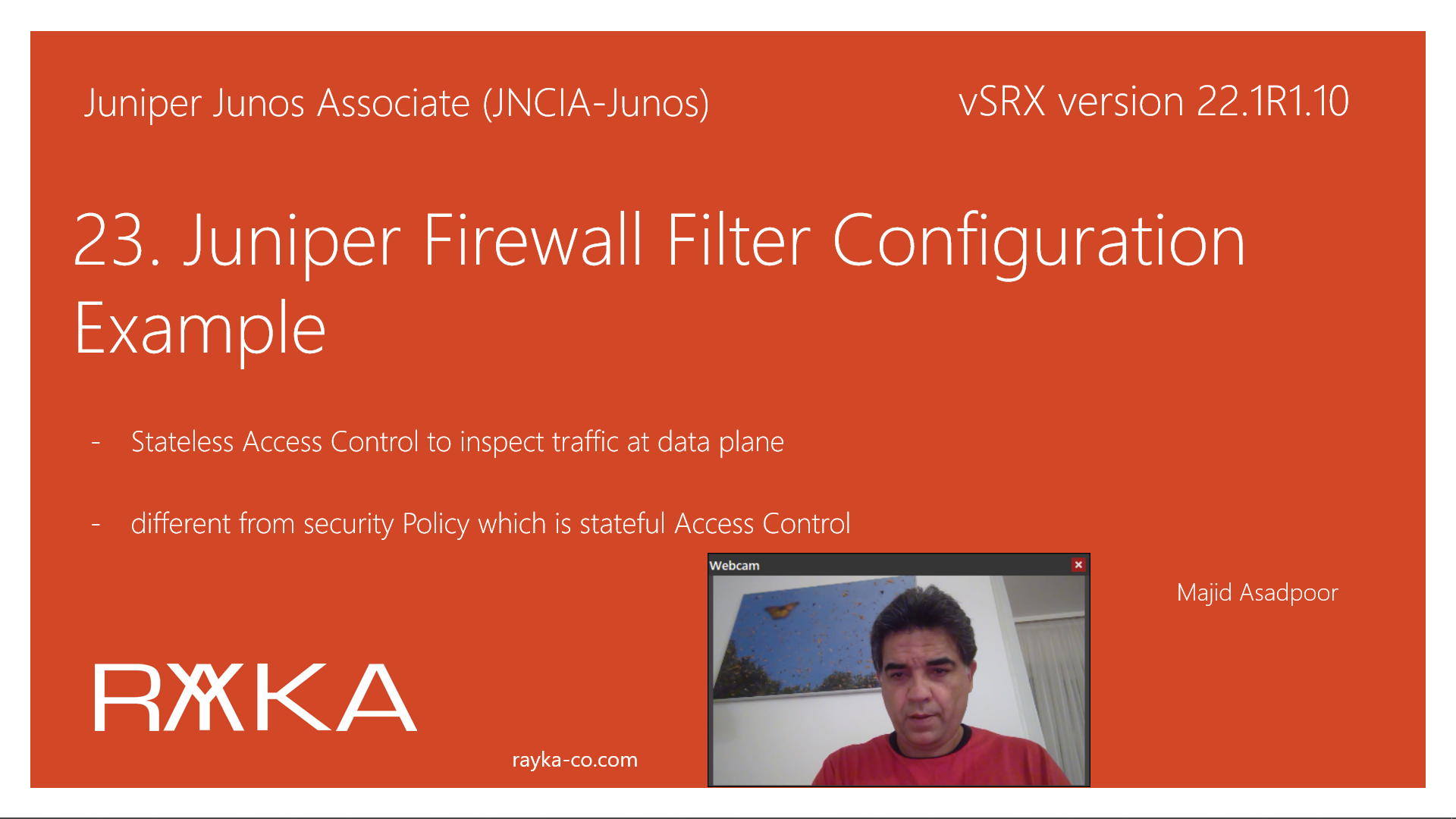Description
1. JNCIA-Junos Introduction and Lab Preparation
JNCIA-Junos Introduction and Lab Preparation is the topic of this section. Juniper Junos Associate course or JNCIA-Junos is a prerequisite for all other Juniper courses like CCNA in Cisco courses. In this course we will learn how to work with Junos, i.e. OS of juniper devices, especially through the CLI interface.
2. Junos CLI modes
Junos CLI modes is the start of the topic where we learn how to work with Junos CLI user interface. This section introduces Junos CLI modes including shell mode, operational mode, and configuration mode where you can configure, monitor, and troubleshoot your configurations.
3. Junos Output Level and Filtering
Junos output level and filtering allow us to control and filter the output of Junos show commands. This allows you to control how much detailed information is displayed. And only show the part of the output that is more important to us.
4. Juniper Junos Configuration types and “configure” commands
5. Junos CLI Navigation Overview
Junos CLI Navigation is the topic of this section. in other words how to navigate command hierarchy and how it helps us to configure juniper devices
6. Junos commit and rollback commands
7. Junos save and load commands
8. Junos Rescue Configuration and Rollback
Junos rescue configuration file is helpful in the situation that your device’s configuration file has been misconfigured or lost. It allows you to define a known or healthy configuration as a rescue configuration that you can roll back to at any time.
9. juniper initial configuration
10. Junos SSH Public Key Authentication
Junos SSH public key authentication is the feature that allows administrators to log in to the Juniper devices without a password. It is attractive and secure at the same time. It is not only useful in normal SSH connection but particularly useful in network automation.
11. Junos interface types and naming convention
Junos interface types and naming conventions introduces different type of physical and logical interfaces and how they are named and numbered in juniper devices. This is what you need to know as a network engineer and is the topic of this section.
12. Junos Primary and Preferred Address
13. junos syslog configuration
14. junos “traceoptions” configuration
15. junos snmpv3 and snmpv2c configuration
16. Preparing Junos Routing laboratory
Junos routing is the main topic of the next sections. In order to better understand the concepts related to the routing, in this section we prepare a simple lab based on vSRX that will be used in the next sections to practically configure various concepts.
17. Juniper Static Routing Fundamental
18. juniper qualified-next-hop and route prefrence
19. Juniper Dynamic Routing Fundamental
20. Juniper Routing Instance Configuration
21. Junos Routing Policy Fundamental
22. juniper routing policy configuration example
Juniper routing policy configuration example helps us better understand what we discussed in theory in the previous section.
We will configure a simple routing policy scenario to advertise the default route over OSPF routing protocol with both prefix-list and route-filter
23. Juniper Firewall Filter Configuration Example
24. Juniper Traffic Policing Configuration Example
Juniper Traffic Policing is another application of Firewall Filter that allows you to rate limit the traffic instead of just accepting or dropping it.
25. Juniper Unicast Reverse-Path-Forwarding
Juniper Unicast Reverse-Path-Forwarding (unicast RPF) feature is used to prevent spoofing attacks in which intruder spoof the source IP address in a way to seem that it comes from a legitimate address and it is usually used in DoS attacks.
26. Junos Packet Capture Configuration Example
27. Juniper monitor traffic command
Juniper Monitor Traffic Command is another troubleshooting and analysis tool for capturing traffic, but only traffic to or from the Juniper device routing engine (RE) are captured. Transit traffic are not captured by the “monitor traffic” command.






























benedictadjei –
This is a great training for someone who is new to Juniper and doesn’t know anything about this amazing Network operating system. Thanks very much for producing these amazing videos.